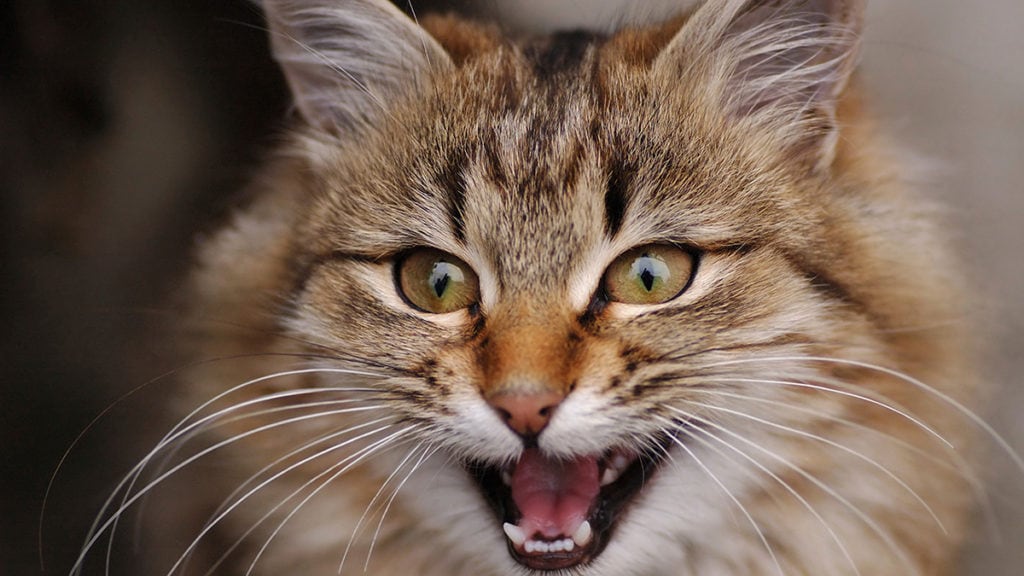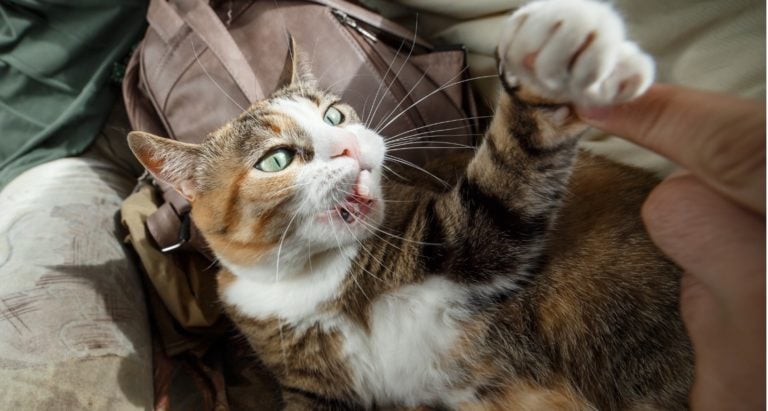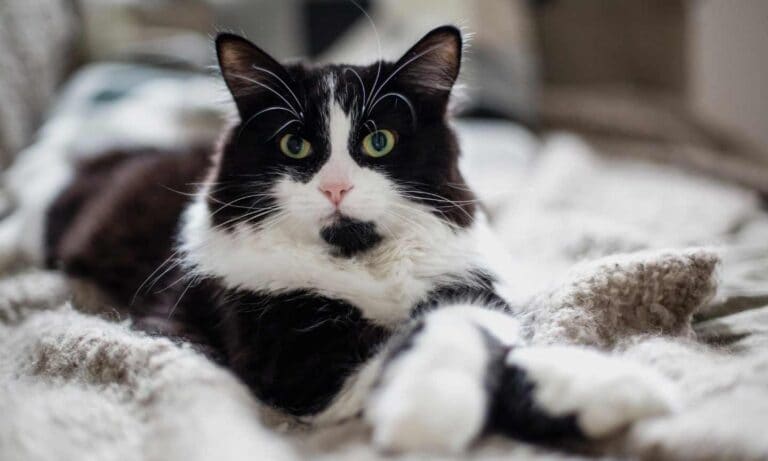Cat people love their cats, and if you’re like me, you like your cat to be cuddly. But when it’s time to get things done, you need your personal space. Sometimes, that might be easier said than done. If your adult cat is a Stage 5 Clinger, don’t worry. Whatever your neediness issues, they can be easily modified with the right tools and techniques, as well as patience and persistence from you, the caring cat owner.
Needy Behavior Beginnings
There are three main reasons why adult cats will exhibit needy cat behavior:
1. Health Issues
We all know what it’s like to be under the weather and we see how our own behavior can change when we’re not feeling right. We may want to rest, sleep longer and order soup instead of a steak. We may also seek caretaking from family or friends. The same goes for our kitties. Even minor health issues can warrant behavioral change.
The first thing to do if you notice an increase in dependent behavior is to schedule a visit to your cat’s veterinarian. Any sudden behavior change can signal medical problems, so make an appointment for a physical exam and explain to your veterinarian exactly what changes in behavior your kitty is experiencing.
2. Accidental Reinforcement
Needy behaviors such as excessive meowing, constant cuddling and following you around like your shadow are all less than desirable. And they are often easily reinforced by cat owners without the slightest awareness of what is happening. That’s right. You may have unintentionally taught your kitty to do the very things you’re seeking to correct. Over time, seen from your cat’s point of view, these behaviors can become “normal” for him.
3. Lack of Prior Guidance And Training
If you have acquired your cat as an adult, then you’re dealing with patterns of behavior that were established long before you and your kitty were introduced. Needy behaviors may have been overlooked and even encouraged throughout the cat’s young life. Don’t despair. There’s still hope for the middle-aged, set-in-his-ways cat.
Clingy Cat Solutions
All cats young and old can exhibit clingy behavior. The good news is that we can change needy behavior through the use of positive reinforcement training. You will find that, in very simple ways, you can change your cat’s mind and redirect unwanted neediness. Plus, training can be both mentally and physically stimulating for your cat. You may be hesitant to start because you’re worried about the time involved. While it’s true that some training goals can take some time to achieve, training sessions with a cat should always be short and sweet. Why not get started? All you need is 10 minutes a day. Here are three common needy behaviors and methods for resolving them.
1. Laptop Lover
My 17-year-old cat, Bob, has his own subtle (yet hugely irritating) way of bothering. One minute I’m typing away and Bob is nowhere to be seen. I’m deep in concentration, writing about cat behavior, when I notice a letter on the screen that I didn’t put there. It came from a sneaky paw attached to a striped body that just seemed to materialize in the form of a giant cat blob lying flat next to the computer. Does this sound familiar?
If you want things to change, you’ll need to be a bit more observant and consistent than I’ve been with Bob. You’ll need to catch him in the act of sneakiness.
As you’re typing away, watch him out of the corner of your eye. As he approaches the table and looks up to jump, stomp your foot, then, as he hesitates, say “Good” and pet his head. Toss a cat treat away from the table so he can see it. Say “Good” again as he goes for the treat.
Create a space where your cat can rest near the table where you’re working. Provide his favorite cat bed and encourage him up to the space with cat treats. It’s important to note that if your cat is already on the table next to you, he has achieved his goal. The negative reinforcement of stomping your foot needs to take place when he’s thinking about it and looking up at you. Of course, you can pick the cat up and place him elsewhere, but he’ll only learn not to jump on the table when you catch him in the act.
2. Chatty Catty
A needy cat will sometimes resort to vocalizing to get your attention. When your cat starts meowing to get your attention, stomp your foot lightly. Pet his head when the meowing stops. Be sure to reward him with a treat or a pet only when he is not meowing.
You also can ask for a different behavior to distract him. Teaching him to come to you for a treat is an easy one. Hold a small treat in your palm so your cat can see it as you call him. As he walks toward you, drop the treat so he can see it and say “Good!” When he reaches you and the treat, give him a pet.
3. Feline-Shaped Shadow
A cat that follows you everywhere can be quite irritating. And if you trip over him, it can be quite painful for both of you! Your cat may even take it one step further and jump at your legs as you walk. Let’s try and redirect this behavior before it happens.
These three tools can help you:
- Feather wand
- Small plastic ball
- Small squirt gun
First, locate your cat. He may be in plain view or in his hiding spot. Walk quickly by him, and as he begins to follow you or jump, change his mind by tossing the plastic ball in his path. Remember that you will need to catch your cat when he’s plotting, before he achieves the behavior of following and attaching to your legs.
Another trick is to hold the feather wand by your side as you walk past your cat. The wand can stimulate play as your cat is redirected to the feathers instead of your leg.
Use the negative reinforcement of a squirt gun as a last resort. When kitty starts following or launches toward you, squirt him once and the water and surprise should deter him. Remember to always pet him after the undesirable behavior stops.
It is also important to reward your cat for doing the right thing all on his own. Catch him in the act of being good! For example, if your cat is lying peacefully on his cat bed at a distance and not bothering you, walk up to him, pet him lightly, say good boy and walk away. The more you can achieve random rewarding of this nature, the sooner your cat will begin to understand that he is being good when he’s calm and at a distance.
By: Mollie Hogan
Feature image: Petr Gnuskin/iStock/Thinkstock
Share:









